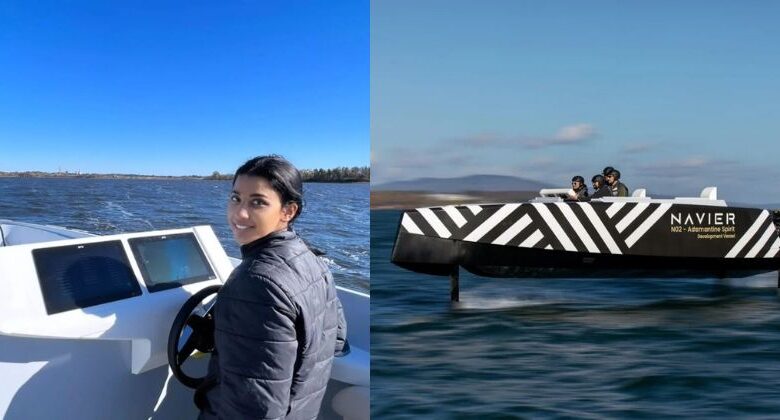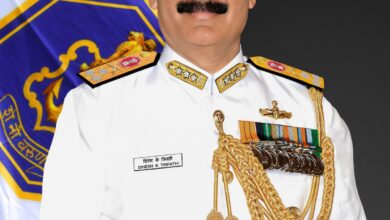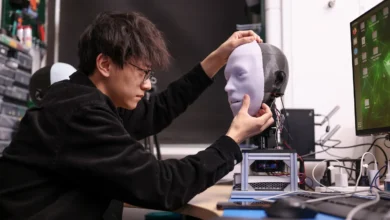This Indian woman failed in physics, interned at NASA, now creates flying boats
In less than a year and a half, Bhattacharyya and colleagues constructed the vessel at a record-breaking pace. In the waters around San Francisco, Navier is now testing prototype boats.

Sampriti Bhattacharyya, a resident of Kolkata, was an average student in school who failed physics and was advised by her teacher to become a housewife. Today, that ‘ordinary student’ has evolved into a businessman who constructs flying boats.
Sampriti, PhD ’17 was a doctoral student at MIT in 2014 at the time that Malaysia Airlines Flight 370 crashed in the South China Sea. She was shocked to see that there was no simple method to locate the aircraft and realised right away the critical need for technology capable of navigating and exploring the oceans, “expanding humanity beyond the borders of land.”
From setbacks to victories
Bhattacharyya’s graduate thesis was centred on creating a swarm of tiny ocean robots that could, among other things, look for crashed planes. She even established a business, Hydroswarm, to advance the technology, but the venture failed.
Bhattacharyya was still dedicated to creating “a new sustainable ocean economy enabled by building scalable tools and machines.”
She thus cofounded Navier in 2020. Navier is a San Francisco-based next-generation marine startup that is promoting “the boat of the future”—a 30-foot electric vessel that is ten times more efficient than a conventional gasoline-fueled boat. The ship is also swift thanks to hydrofoil technology; one of Navier’s clean-energy boats can go from Redwood City to Berkeley, California, in just 25 minutes as opposed to a 90-minute trip.
The 540 e-mails story
At the age of 20, Bhattacharyya’s family got her a computer, and she set out on the challenging task of locating an internship in the United States. She yearned for a similar experience because her friends who attended prestigious Indian schools had already done it. In order to find an internship, Bhattacharyya sent out more than 540 emails.
“In each of the 540 emails, I told them what I could do for them and only 4 responded. And in the end there was only one successful email and that was an internship opportunity at Fermilab.” Said Bhattacharyya. Despite the mounting criticism, Bhattacharyya’s motto remained “if it’s not against the laws of physics, it’s possible.”
She was able to finish her master’s degree in aeronautical engineering at Ohio State thanks to that, which helped her establish herself in the nation.
She then applied to MIT for her PhD after that.
Bhattacharyya, who was pursuing a degree in mechanical engineering, immediately felt at home at the Institute. She put all of her energy into her thesis on underwater drones, which she dedicated to her hero, Tony Stark, the fictional inventor who created Ironman in the Marvel Universe.
Made it to the Forbes
Creating her startup following a NASA internship, Bhattacharyya took a plane to Chicago to work as a research assistant. She fully embraced science at that point.
After that, she completed a second NASA internship, went on to earn a master’s degree from Ohio State University, and then earned a PhD from MIT. Following her relocation to San Francisco, she raised $12 million and hired a team to manufacture boats. Listed as one of Forbes’ 30 most influential young change-makers she was also named one of the 30 most influential young change agents in the world by Forbes in 2016.
The flying boat- Navier
In less than a year and a half, Bhattacharyya and colleagues constructed the vessel at a record-breaking pace.
Until it picks up speed, the electric boat moves like a regular boat. At that point, the computer-controlled hydrofoils beneath the ship begin to operate and raise the craft out of the water (much like an aircraft’s wings do to produce lift). Only three of the stilts are in contact with the water, thus it moves with little resistance.
“It’s a boat and a plane,” says Bhattacharyya. “This is where my prior experience as a mechanical and maritime professional as well as an aerospace engineer ties in.” She adds that the vessel is the world’s longest-range electric boat and the first all-electric hydrofoil boat produced in the United States, and that the integration of top-shelf technology and software results in a smooth ride with triple the range of a normal electric boat.
In the waters around San Francisco, Navier is now testing prototype boats. Over the following few years, the company intends to spread across North America, Europe, and Asia. The CEO of the company, Bhattacharyya, claims that producing hundreds of these boats in an affordable budget is the new challenge.
Please, also have a look into : 75% of Indian villages now declared Open Defecation Free Plus



